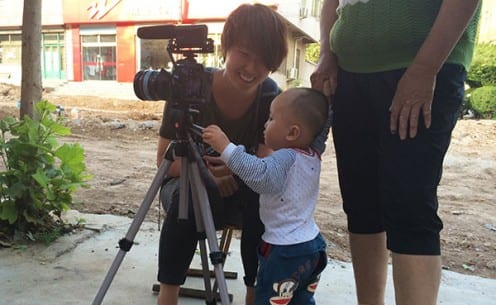For a professional academic the foundation of reputation must be scholarship and integrity. Academic studies are interpretations, and even what our informants tell us are their interpretations, and may not equate with the underlying reasons for their actions. Nevertheless, we can and should strive for our writing to be well informed, and authoritative as the basis for original insights. This commitment is at the heart of the Global Social Media Impact Study (www.gsmis.org) a team of nine anthropologists in eight countries each spending 15 months collecting data on the use and consequences of social media.
WHAT WAS THE DATA BEHIND MY BLOG POST?
As part of our project I have been working north of London in an area I call The Glades (not the real name), a site with a population of around 24,000 people. I have worked there full time since April looking explicitly at the use of social media. The first focus of my research was a hospice and terminally ill patients. The most recent has been with three schools, where I and a colleague have conducted interviews with forty pupils aged 16-18. But the findings I set out in my blog post (24/11/13) were not dependent on those interviews. The trends were emerging right from the start of fieldwork in April last year through the door-to-door interviews (over 150 different informants, each a minimum of forty minutes). I was conducting around the villages which included young people. Ethnography also means the countless informal encounters with people who live in the area. Of particular importance is direct observation and participation, so you know what people are doing and you don’t just rely on what they say they are doing. Many in the team don’t even interview, everything is direct observation and participation, for example, the analysis of informants’ postings.
If the schools agree, we may also conduct some questionnaires involving much larger numbers, perhaps several thousand. The best academic work in this field, such as that of Barry Wellman or Sonia Livingstone, combines qualitative and quantitative sources. But the post was based on the strength of qualitative rather than quantitative work. Asking the right questions in any future questionnaire depends upon this earlier research. At first, if you merely ask these school pupils why they hardly use Facebook today, they may talk about the functions of Twitter or even claim they care about privacy – because they may realize that this is what adults want them to say. A quantitative survey is often a bad aggregate of these superficial responses. By having long conversations with individuals, under conditions of anonymity, about actual postings and the effects these had on their class or on their families, you can dig deeper. On further discussion, they themselves make clear that these issues of privacy were not really their concern, and in the end they don’t think the newer media are more effective. But rather the key issue is that media used by older people is not a cool site for their own peer to peer interactions. My blog post on ‘The Fall of Facebook‘ was not so much about the decline of Facebook amongst schoolchildren as trying to understand what we can learn from this. Quantitative surveys are fine for simple questions such as ‘what phone do you have?’, but for a subtle issue, such as the motivation for shifting platforms, I believe our work should prove far more reliable than any survey, however extensive.
WHERE IS THE REPORT?
So far I have completed 9 out of 15 months fieldwork. Before I write any formal publications, however, I will be reviewing these results, again and again, and we will be continuing to interview young people and engage in participant observation until the end of our data collection in September 2014. I do have one report on an early applied aspect of my findings, though with a very different focus, which may be found here.
We hope eventually to produce at least ten books of data, an Open Access university course and perhaps teaching material for school children, all free and online. We hope this will be in multiple languages, so that people all around the world can be better informed. Rather than anecdotes about the political impact of Twitter or the effect on privacy of Facebook they will have access to sustained scholarship. They will also come to see how these things differ from region to region. But with data collection continuing until September 2014, we don’t expect to publish reports until 2016. This is why, given the interest in our topic, we keep a blog of interim findings and stories. We would prefer our final reports to go viral rather than our blog posts (there was no press release), but we now appreciate we have no control over this.
WAS THIS BIG NEWS?
Well not really, the very reputable Pew Research Centre in the US had published a report called ‘Teens Haven’t Abandoned Facebook (Yet)’ on 15/08/2013. So I was not the first to note these trends. However, while Pew found that in the US Facebook still takes the bulk of teens’ attention, I observed that in The Glades it was now relegated behind its rivals and used for family much more than for peer communication. That is why I could say with confidence that with respect to coolness Facebook is ‘dead and buried’ for these teens. But then their survey ended in Sept 2012. By 5/11/13 Pew had published ‘5 sites teens flock to instead of Facebook‘.
I don’t think anyone reading my original blog post would be misinformed. I don’t ever suggest that Facebook is doomed. I state clearly that Facebook is expanding in other field-sites and age groups and that these same teens retain Facebook for family purposes. My data overwhelmingly made the case for this loss of cool. The phrase ‘dead and buried’ unambiguously only refers to the way Facebook is never going to be cool again for this age group. If you saw the NBC report on my work, it implies that my findings also reflect trends in the US. Even the ‘opposing’ industry analyst could not deny this loss of cool. What he opposed was the idea that Facebook itself was dead and buried, something I have never ever suggested – though the same report implied that I had.
GOING VIRAL
What went viral was not the blog piece, but a version that was re-written by a journalist for an online academic magazine called The Conversation. The journalist gave me the opportunity to review her version, which I checked for factual errors. But, mea culpa, I realize now that I left in elements in her version that perhaps over-simplified the original. For example, my original post recognized that there was some time between a mother’s friending, and the move from Facebook to other media, while the new version implied an immediate effect. I should have corrected and qualified more precisely. I apologize for this and regret that I didn’t. But on the other hand, the journalist in question was only trying to do her job based on the journalistic claim (usually correct) that academic work will not gain popular attention because of the way it is written. Allowing your work to be ‘sexed-up’ seems to be a compromise academics will have to accept if they want to reach those audiences. So I didn’t want to challenge everything she had done. In the future I will be more pedantic about correcting such rewrites. Small shifts in meaning that came with the rewrite became accentuated in later less careful reportage by other journalists. Yet the substance was accurate, and I nowhere imply a demise for Facebook.
I am not of course happy when a subsequent journalist mistakenly claims that this trend was found in all eight countries, or when European funding is turned by some reports into the project being a study of Europe. Journalists have to work to demanding deadlines, but equally I was not responsible for these mistakes, which simply distort what I had said. I am sure there are journalists who have as much concern with integrity and keeping people properly informed as we do. We will want to work with those journalists in the future as a partnership, with anthropologists having the time for more sustained research, and journalists helping to rewrite for and disseminate to a wider public. Over time genuine positive collaborations are entirely possible and to be welcomed.
But what happened last week was not that. The reason the post went viral is likely to be due to a combination of factors. In some media, my post was used for more sensationalist purposes to claim that Facebook itself was doomed. This was ‘news’ at a Christmas period when journalists were short of news. Most important was the way items spread easily through the viral impact of digital media. Phrases such as ‘dead and buried’ shifted from a description of Facebook losing its cool for English schoolchildren, to the supposed fate of Facebook as a whole. I soon began to get emails from financial analysts, because in our world there are many people who couldn’t care a less about academic research but care hugely about share prices.
THE FUTURE
On reflection, I am relatively sanguine as to the results of this last week but I would much rather go viral with our actual published research results. What clearly should happen now I think is quite obvious. I really, really hope that some of the journalists or indeed readers of this news story will now go out and talk to some teenagers in depth about their use of new media. By its very nature as ethnography our work is highly parochial, based in one place. It would be extremely interesting to know if there are similar trends amongst school pupils in the North of England or in France.
Meanwhile, on return to London in February, I have another six months to continue this research, expanding on these findings but also exploring in much more detail why these trends develop and what we can learn from them. The eventual report will be hundreds of pages not just a quick blog post. We will never be able to fully control the spin that is put on our results, but the reason we do this work is to keep people informed and it is to be hoped that what happened last week will result in continued interest in the amazing work of the GSMIS team.
Finally, our field method is participant observation. So being a participant in ‘going viral’ is quite a useful experience. This response has of necessity been immediate, but I will reflect on it over the longer term and hopefully will learn some useful lessons about the nature of viral spread. Going viral just became part of what we study.
I apologize that I was unable to respond to most inquiries. I am currently in the Caribbean and visiting our field-sites in Trinidad and Chile, but if you have further questions about our research please contact me at d.miller@ucl.ac.uk, though I am not back in the UK until the end of January.
 Close
Close















